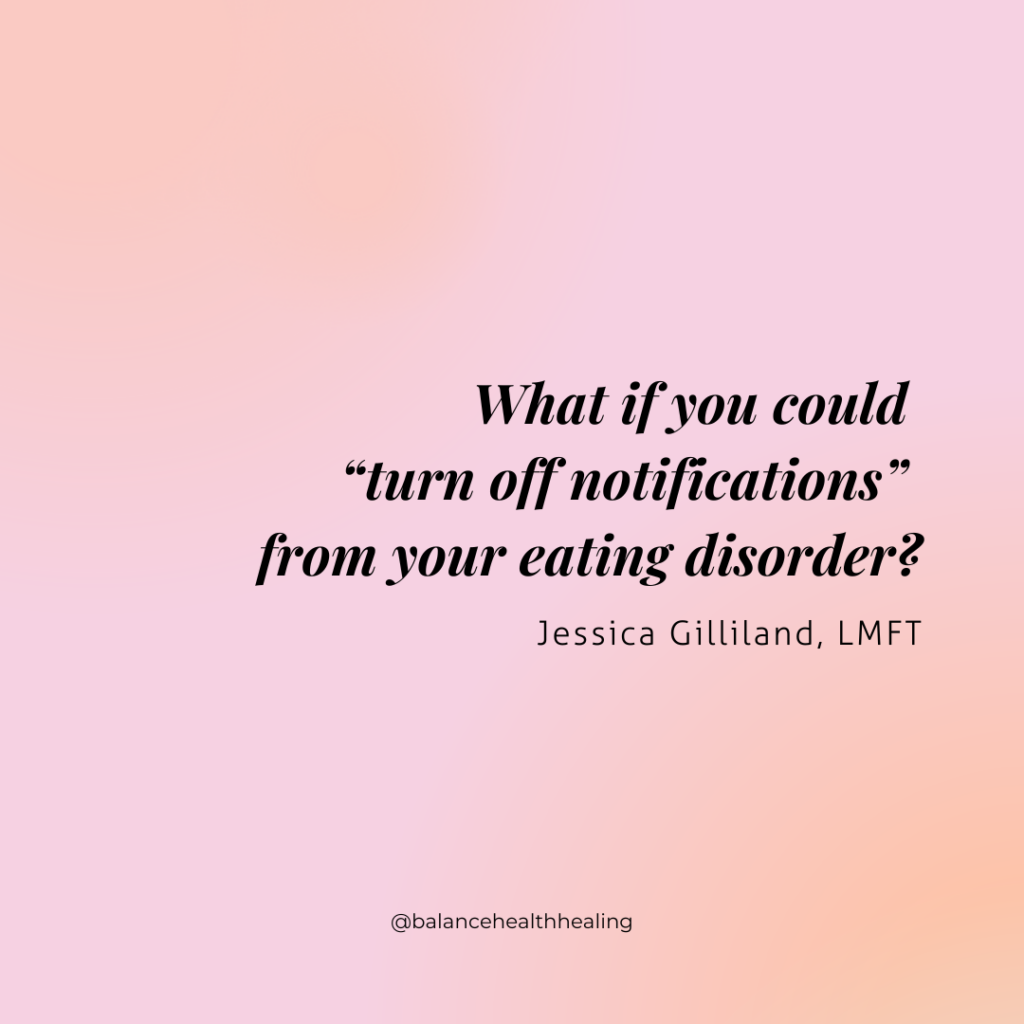I’ve recently been trying to be more intentional about how much time I spend on my phone. I don’t think I’m alone in feeling like I find myself wasting time on social media, online shopping, or reading the news on my phone when I could be doing things that feel more valuable to me. One thing that has helped me is  turning off notifications on many of the apps that tend to distract me. Apps are designed to get us to spend more time on them, especially by sending us notifications about new posts, new discounts, new products, etc. Without the notifications pulling me in, I get to be the one to choose when I engage with those apps.
turning off notifications on many of the apps that tend to distract me. Apps are designed to get us to spend more time on them, especially by sending us notifications about new posts, new discounts, new products, etc. Without the notifications pulling me in, I get to be the one to choose when I engage with those apps.
Can you sense an eating disorder recovery metaphor coming? Mmhmm.
What if you could “turn off notifications” from your eating disorder? What if you could somehow mute some of the things that draw you toward putting more time, energy, thought, and worry into disordered patterns? Here are a few ways you can mute those “notifications” that draw your attention toward an unhealthy way of relating to food, exercise, or your body.
- Get rid of apps that serve your eating disorder. I can confidently say that, for the most part, apps that track calories are inherently unhelpful to your eating disorder recovery. Calorie tracking apps may be literally sending you notifications that make recovery more difficult. Too much focus on calories disrupts your ability to listen to your body and fuels deprivation and shame about eating. Unless your dietitian is asking you to track your intake in favor of your recovery, get rid of tracking apps. MyFitnessPal is NOT your pal.
- Throw out your scale. Every time you see that scale in the corner of your bathroom or peeking out from under your bed, it’s like getting a *ding* notification from an app. If weighing yourself is part of your eating disorder, even having the scale around can be an intrusive reminder that you “should” (according to your eating disorder) be worrying about your weight. Getting the scale out of your environment is a powerful way to mute those unnecessary reminders.

- Get rid of clothing items that serve your eating disorder. If you’re hanging on to clothing that is serving as a “goal” for changing your body, having those items is like getting notifications from your eating disorder every time you open your closet. Cleaning your closet and donating or selling items that don’t work for your body right now is a way of reducing chatter from your eating disorder when you get dressed each day.
Of course, I’m not saying you should be expected to be able to “turn off” all thoughts from your eating disorder. (I, at least, have yet to figure out how that might be done!) However, remember that there are ways you can be proactive in reducing the frequency of “notifications” popping up from your eating disorder. Just like a phone app, eating disorder patterns are designed to take increasing amounts of your attention, leaving you with less attention for other things. This is part of why an eating disorder might have been a form of coping with difficulty in life, and it’s also part of why an eating disorder can end up becoming so damaging. By actively removing opportunities for your eating disorder to grab your attention, you increase the mental space in which other parts of your life can flourish.
Even though it’s not always easy, you can decide to push “mute” on some of the things your eating disorder uses to take up space in your life. Making an empowered choice to put less energy into your eating disorder and more energy into the rest of your life can feel scary at first, but will ultimately be freeing.

